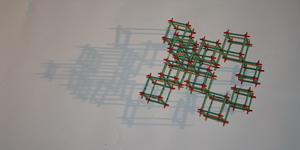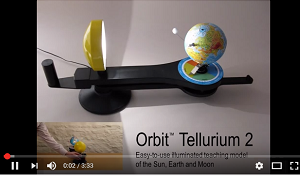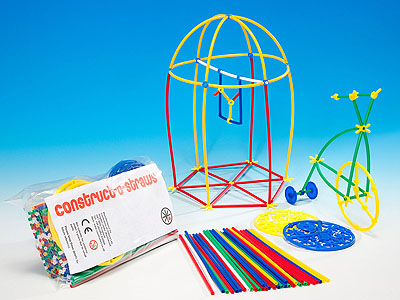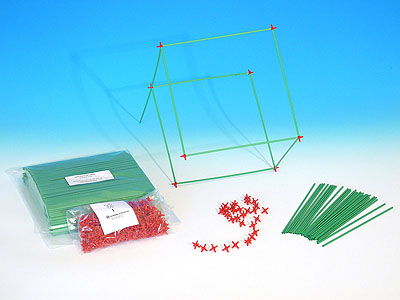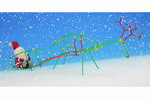Orbit Material for Mathematics Class Set
116.35 each
Explore the shape, geometry and mathematical properties of 2D and 3D shapes with this molecular model teaching set
Add to favourites | View Favourites
ATM Equipment Review.
The Orbit Material for Mathematics Class Set provides a flexible and fun hands-on construction resource with which to teach a wide range of curriculum topics from lower Primary (Key stage 2 and 3) to secondary school.
Using this material, pupils will be able to explore the features and properties of a wide range of 2D and 3D geometric shapes and patterns, following the simple instructions and visual guides on the work cards.
Topics for study include simple polygons and polyhedra, complex polyheda and duals, angles, tessellations, number patterns, symmetry and perimeter.
The material is compatible with the Construct-o-straws™, Kubic Bubbles and Orbit molecular modelling sets by Cochranes of Oxford.
The set is particularly suitable for extension work and can be used for extra curricular activities such as engineering clubs.
Contents: 406 moulded joiners, 680 straws, 74 work cards and teachers notes
*Please note colours of joiners may vary from those pictured.
Orbit Material for Mathematics Class Set
| Component | Quantity | Order Code | |
| Cos flex white straw | 26 | 0203 | |
| Cos flex green straw | 26 | 0205 | |
| Cos flex yellow straw | 26 | 0206 | |
| Orbit rigid red straw | 60 | 0210 | |
| Orbit rigid grey straw | 30 | 0211 | |
| Orbit rigid blue straw | 60 | 0212 | |
| Orbit 1/2 straw red rigid | 120 | 0512 | |
| Orbit 1/2 straw blue rigid | 120 | 0513 | |
| Orbit 1/2 straw grey rigid | 30 | 0514 | |
| Cos 1/2 flex white straw | 26 | 1652 | |
| Cos 1/2 flex green straw | 26 | 1653 | |
| Cos 1/2 flex yellow straw | 52 | 1654 | |
| Cos 1/3 flex green straw | 26 | 1656 | |
| Cos 1/3 flex yellow straw | 52 | 1657 | |
| Orbit hinged grey 3-prong | 50 | 0508 | |
| Orbit hinged 2-prong no hole | 12 | 0510 | |
| Orbit hinged grey 4-prong | 26 | 1504 | |
| Orbit hinged grey 5-prong | 26 | 1505 | |
| Orbit hinged grey 6-prong | 26 | 1506 | |
| Orbit planar 4-prong yellow | 64 | 1510 | |
| Orbit planar 6-prong yellow | 48 | 1511 | |
| Orbit planar 8-prong yellow | 48 | 1512 | |
| Orbit planar 10-prong yellow | 24 | 1513 | |
| Orbit planar 12-prong yellow | 8 | 1514 | |
| Orbit Maths cards 1-72 | 1 | 0115 | |
| Orbit Maths booklet | 1 | 0117 | |
 | Orbit Na blue | 8 | 0217 |
 | Orbit Ob red | 10 | 0227 |
 | Orbit Nj blue | 24 | 0242 |
 | Orbit Ol red | 18 | 0254 |
 | Straight joint | 14 | 0490 |
| Gratnell's storage tray with lid | 1 |
- Teaching resources
- Teaching perimeter
Customer reviews shown below. Leave a review
Product quality: Service and delivery: Age of user: 18+ | Orbit Material for Mathematics Class Set Submitted by: Mr John Fergeus (08/05/2024) This is my 4th purchase I look forward to the 5th Response from Cochranes: Thank you for your custom! Verified purchase |
Product quality: Service and delivery: | Orbit Material for Mathematics Class Set Submitted by: Matthew Reames, Equipment Review for ATM (15/08/2013) In brief: This well-thought-out set of materials has a place in maths classrooms throughout Key Stages 1-3 and beyond. Students of all ages can benefit from the hands-on constructions that are possible with these materials. “No matter what geometry topic your students are learning, there is a place for a set of Orbit Material for Mathematics.” The Orbit Material for Mathematics arrives neatly packaged in a school tray with a lid. Inside are bundles of narrow straws in several colours, bags of coloured connectors, a pack of work cards and a set of teacher notes. From this relatively simple set of materials, students can create a seemingly unlimited range of 2D and 3D shapes. The basic components, the straws and connectors, fit easily together. Once fit together, the pieces remain in place while children explore and investigate. When children are ready, the pieces easily dissemble. The colour-coded straws come in both stiff and flexible varieties as well as in several lengths. The straws can also be cut with a pair of scissors if different sizes are needed. The connectors (called joining bits) come in both rigid and flexible varieties and have evenly-spaced prongs. Depending on the joining bit, the number of prongs ranges from 1 to 12. The pack of full-colour work-cards addresses a wide range of topics from basic polygons (triangles, every manner of quadrilateral and so on) through cubes, pyramids and prisms, and on to tessellations, Euler's formula and dissection of a cube. The work cards have photographs of the shape being addressed and, depending on the topic of the card, instructions or questions for students to answer. The right Angle Triangle card, for example, instructs students to make a triangle as shown on the card, has a short set of facts about right angles, and then asks several questions: ‘Is your right angle triangle also a scalene triangle or an isosceles triangle? Make some other right-angle triangles. How many of the angles are equal? How many of the sides are equal? Can you make a right angle triangle that is also an equilateral triangle? The bottom edge of each work card is also colour-coded in order to reference it with related topics, and each card also has a symbol linking it to an approximate age-group range. Classroom teachers will likely appreciate the guidance provided by the work cards, but should in no way feel limited or constrained. Instead, the work cards should be seen as a starting point for mathematical investigations, not as an ending point. The teacher notes give a full explanation of the materials and the work cards, and also the reference chart for the colour-coded topics on the work cards. The notes also explain the topics in greater depth and provide some suggested ways to use the materials. One suggestion is that the first time children use the materials the teacher might allow the children time to experiment and become familiar with the components. I can easily see this set of materials being used in a wide range of classrooms from Key Stage 1 through Key Stage 3. Teachers may use these materials in a number of ways depending on the classroom context, from creating a single model to show the entire class to allowing each student to investigate and construct. While younger children may initially find the narrow straws and the connectors require some fine-motor coordination to assemble, this should not be a problem for long, even for small fingers. (And as with any small items, do keep in mind they may be a choking hazard if used incorrectly.) As older children investigate larger and more complex 3D shapes, they will enjoy the flexibility and open-ended opportunities this set provides. Matthew Reames • Former Head of Mathematics, St Edmund's Junior School, Canterbury, now PhD student in mathematics education at the University of Virginia |
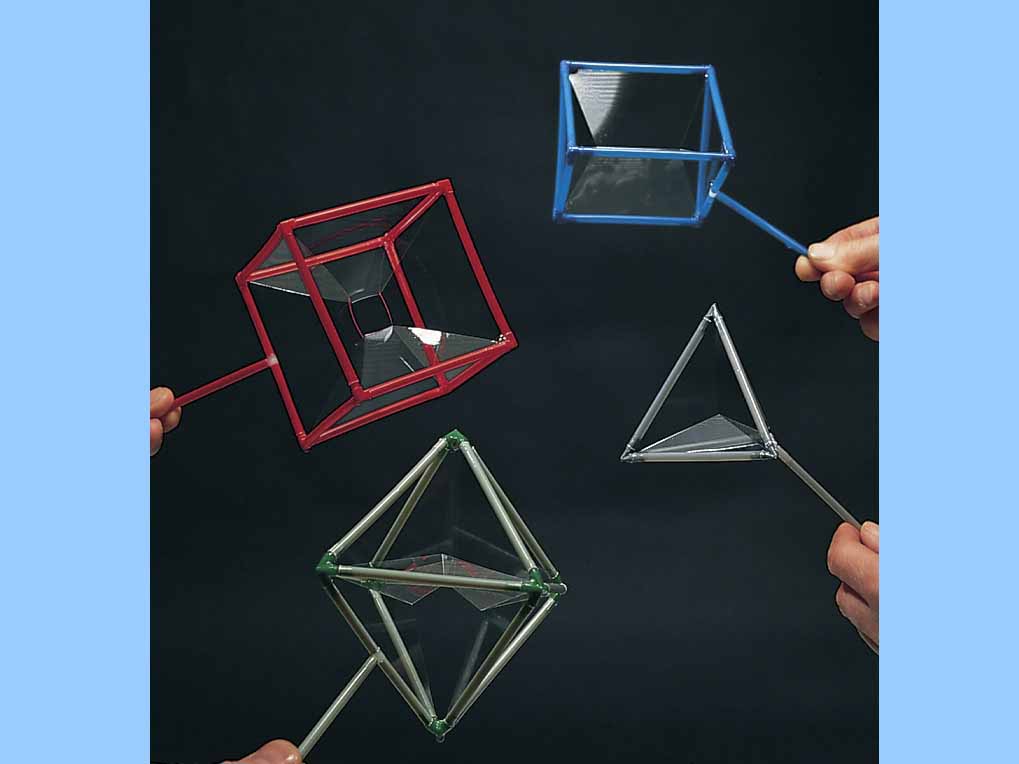
The British Physics Olympiad 2018 has chosen the experimental project to experiment with soap film surfaces and bubbles.




 Your basket is empty
Your basket is empty





